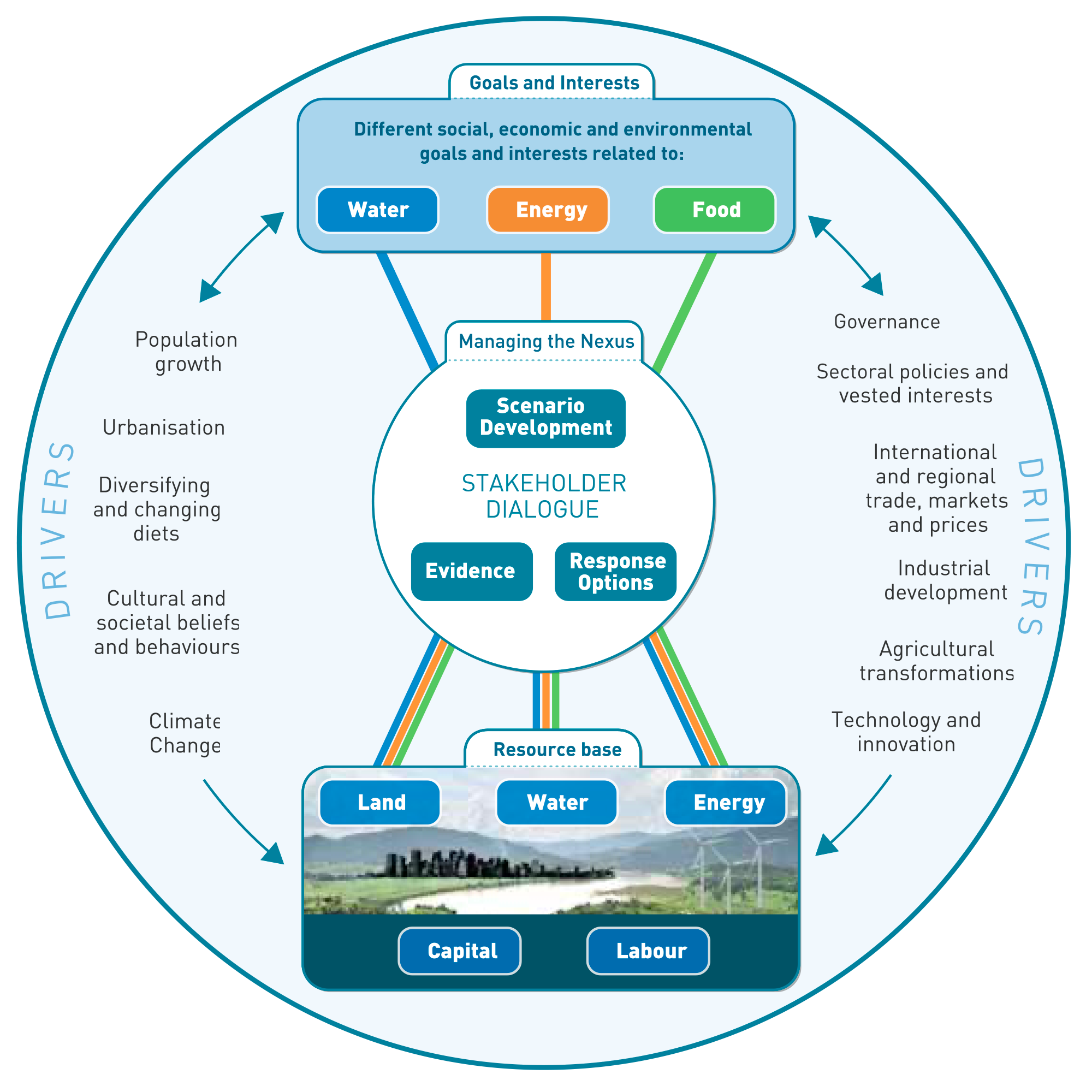The linkages between water, energy, food and ecosystems are clear, but they require an integrated approach allowing decision-makers to be better informed about trade-offs and synergies so as to manage resources more sustainably
Antonella Autino PRIMA
The Mediterranean is significantly more impacted by climate change than other regions. Moreover, due to expected population growth, the demand for water, food and energy in the Mediterranean is projected to increase by over 50 percent by 2050.1 Therefore, there will be ever increased competition for resources. Food and energy production depend on water availability, and water has a major impact on employment in the region, considering that jobs in agriculture, forestry, inland fisheries and food manufacturing are heavily water dependent.2 Competing needs for scarce resources already affected by climate change impacts will exacerbate regional dependencies on imports and international trade markets.
All currently projected pathways of climate change will increase climate-related risks in multiple systems and economic sectors in the region, amplifying current pressures on local ecosystems, economies and human well-being. The region’s needs have been further severely challenged because of the war in Ukraine and the ongoing problems from the COVID-19 pandemic, which disrupted markets and trade and increased commodity prices exponentially.
To look at these problems as separate entities rather than as interconnected has not served to mitigate them. Instead, seeing the nexus between water–food–energy needs and working in an integrated system can be pivotal to a successful transition to a green economy and sustainable development. Addressing interdependencies is indeed considered essential to achieving the SDGs and the Paris Agreement.

WEF nexus – “The FAO approach to the Water-Energy-Food Nexus”3
Although there is consensus that these sections and their natural resource bases – land, soils, water – go hand in hand, there has not yet been a full adoption of the nexus approach. It has been constrained thus far because of a lack of actionable strategies and effective governance to guide its deployment on the ground. A concrete shift towards sustainability would entail that nexus collaborative models or processes where trust is being built among stakeholders, such as communities of practice, become part and parcel of development planning at local, regional and national levels. Building trust among stakeholders in the WEPS-NENA project 
This would require a high-level political will that is supported by a sound governance structure and informed by science and data, all key to ensure that the WEFE Nexus is integrated and mainstreamed in planning, monitoring and evaluation systems at all levels. Such a shift would move from disjointed sectoral development interventions to more integrated resource management and sustainable use, which recognize and balance the different goals, interests and needs of people and the environment. Regional policy coordination for the nexus in the Arab region
From a sustainable agrifood systems perspective, trade-off analysis is key to addressing the nexus, and science-based debates can help reveal the most pressing issues and prioritize those areas where all sectors can work together. Technological innovation and nature-based solutions spearheaded by the private sector can minimize costs for the sustainable management and restoration of natural resources. For this transformation to take place, there is also a need for financial innovation in de-risking and investment mechanisms that target innovative agrifood businesses and incentivize WEFE Nexus solutions. Technology and innovation for the nexus approach in Lebanon 

- 1 2030 Water Resources Group (2030 WRG). 2009. Charting Our Water Future – Economic frameworks to inform decision-making. Washington, DC, 2030 WRG.
- 2 United Nations World Water Assessment Programme (WWAP). 2016. The United Nations World Water Development Report 2016: Water and Jobs. Paris, UNESCO.
- 3 FAO. 2014. The Water-Energy-Food Nexus. A New Approach in Support of Food Security and Sustainable Agriculture. Rome, FAO.




